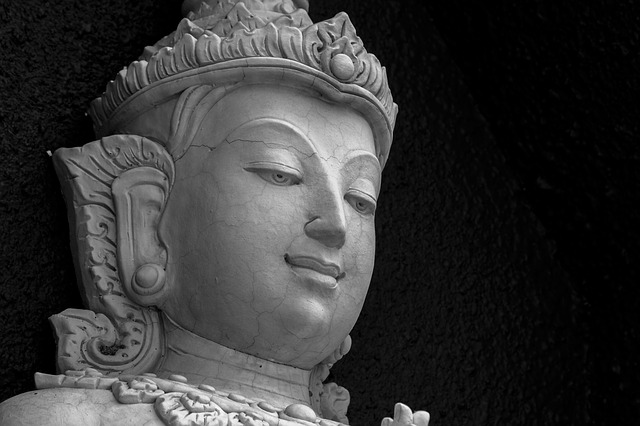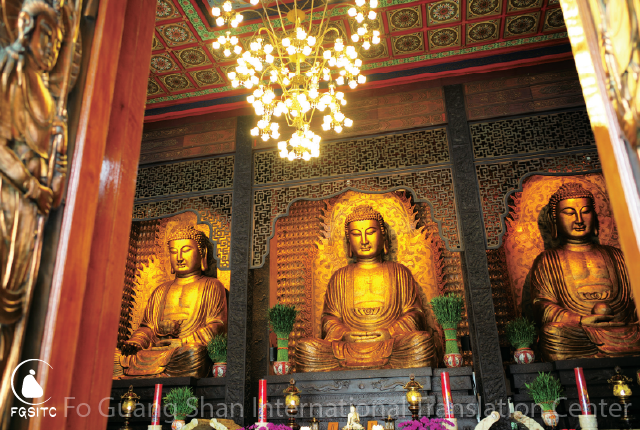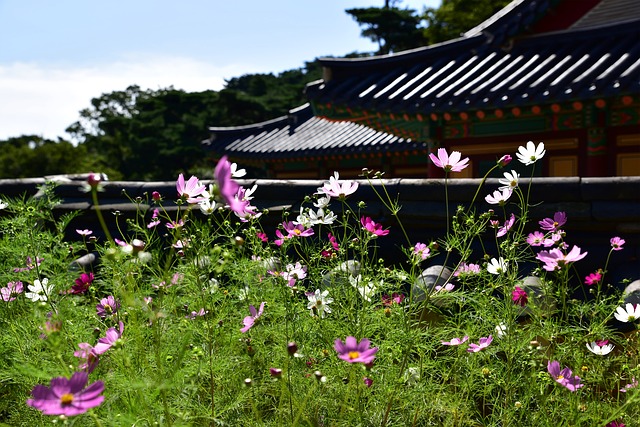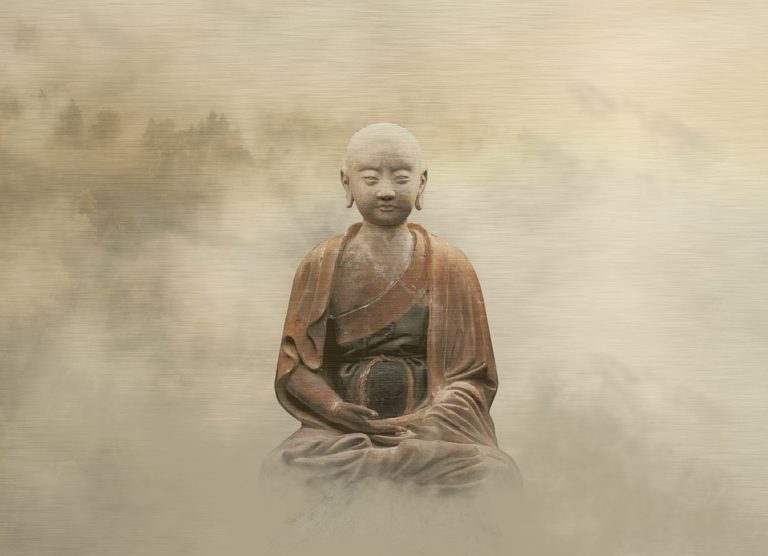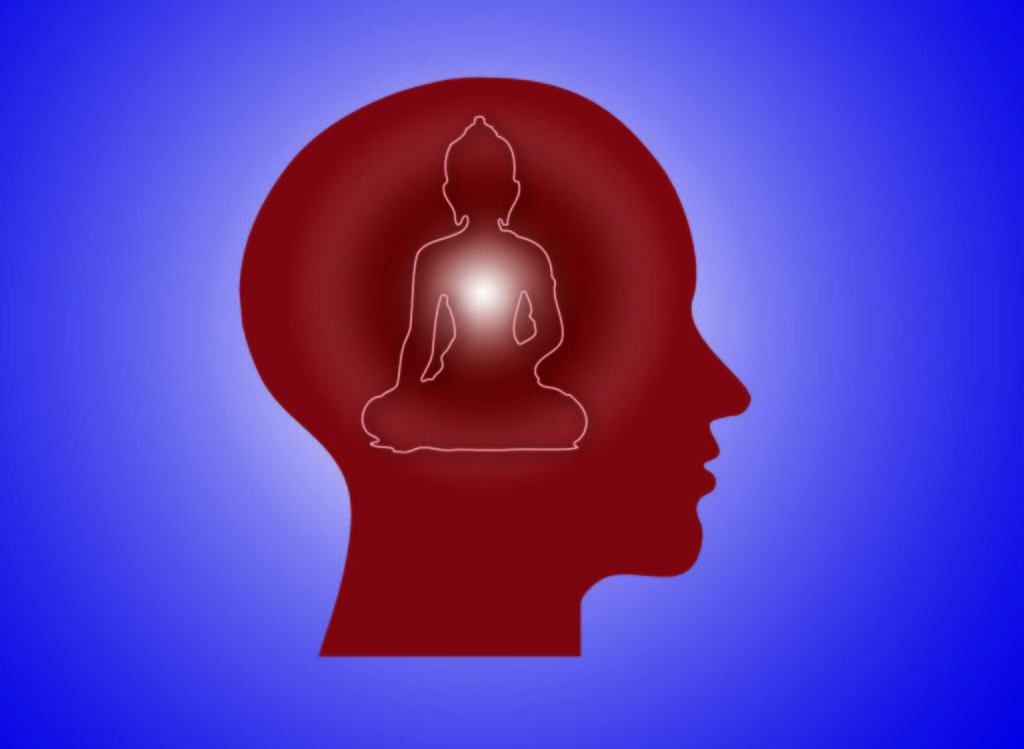Many different sutras contain descriptions of the thirty-two marks and eighty characteristics, each with slight variations.
The eighty notable characteristics are:
- Top of his head not visible to others.
- A prominent nose with well-concealed nostrils.
- Eyebrows shaped like a new moon.
- Large, round ears that are long and thick.
- A strong body.
- Closely-fit bones.
- When he turns, his whole body turns, just like a majestic elephant.
- Leaves imprints as he walks.
- Red fingernails.
- Full, rounded knees.
- A clean body.
- Soft, smooth skin.
- Straight, erect posture.
- Round, slender fingers.
- Fine fingerprints.
- No visible veins.
- Well-concealed heel bones.
- A supple, smooth body.
- A round, full body.
- A straight, steady, focused gait.
- A dignified appearance.
- Peaceful and calm deportment.
- A stable posture when standing.
- A majestic presence.
- A pleasing appearance.
- A perfectly sized face.
- Unperturbed demeanor.
- A beautiful, complete face.
- Red lips.
- A voice that carries.
- A deep, round navel.
- Hair that curls to the right.
- Long arms that reach below the knees.
- Flexible arms and legs.
- Clear, straight palm-lines.
- Fine, long palm-lines.
- Unbroken palm-lines.
- Brings joy to those who see him.
- A perfect, broad face.
- A face full like the moon.
- Peaceful, joyful speech.
- Fragrant pores.
- Fragrant breath.
- Appearance awe-inspiring like that of a lion.
- Gait steady like that of an elephant.
- Steps airy like that of a goose king.
- A well-formed forehead.
- A clearly audible voice.
- White teeth.
- A bright red tongue.
- A long, thin tongue.
- Thick body hair.
- Soft, clean body hair.
- Big, wide eyes.
- A clean, unobstructed airway connecting the seven openings of the face.
- Lotus-colored hands and feet.
- A well-concealed navel.
- An abdomen that does not protrude.
- A well-sized abdomen.
- Steady, stable body.
- A sturdy, stable body.
- A large frame.
- Soft, clean hands and feet.
- A ten-foot halo.
- A glowing halo.
- Treats all sentient beings equally.
- A majestic appearance.
- Does not slight any sentient being.
- An even voice.
- Able to vary his teaching methods.
- Teaches according to the circumstances.
- Though speaking with one voice, sentient beings receive many teachings according to their needs.
- Adapts his teachings according to the spiritual maturity of the listener.
- Can be seen with endlessly different appearances.
- An appearance one wishes to see again.
- Long, healthy hair.
- Long, neat hair.
- Neatly curled hair.
- Dark-colored hair.
- A virtuous appearance.
This list is from Seeing the Buddha, by Venerable Master Hsing Yun.
One of the great advantages of sitting meditation is that you can take it with you wherever you go. Whether you are in a forest deep in the mountains or beside a stream among the grass and reeds, you can develop meditative concentration just by sitting down and crossing your legs.But what is meditation? Does it come from sitting, standing, or lying down? Huineng, the Read more
It seemed that I had to do everything for Buddhism. For Buddhism, I have to only set the tone and not become the master, hand over my physical body to the temple and give my life to the Dharma protectors, heavenly beings and nagas, and making the aspiration to head out for Buddhism, striving to move Buddhism toward humanity and society. It seemed then that Read more
Why should people create Buddha images? Did the Buddha really want everyone to make images of him and worship his body?In truth, the purpose of creating the Buddha images is not to create symbols for worship. Buddha images are reminders that “the mind is the Buddha,” and that everyone has Buddha nature. Buddha images also remind us to frequently recollect the virtues of the Buddha Read more
True stature is not created by form or ornament; words spoken out of jealousy and greed oppose it. Only when evil has been stopped at its roots, and when there is wisdom without anger is there true stature.— Dharmapadavadana Sutra The False Stature of This WorldEveryone wants to be well regarded by others. However, in seeking true stature, people too often waste their time in Read more
It is enough for most monks to only have the ability to chant and teach the Dharma, and of course I too can chant sutras and teach the Dharma. But only being this kind of monk was not something I was willing to do. I wanted to become a monk who was able to engage in propagating the Dharma in a multifaceted way: There is Read more
Observing the precepts is the concrete manifestation of compassion and the bodhisattva path. Read more
The great masters of the Chan School have always been like leisurely clouds and wild cranes, sometimes dwelling in the mountain forests, sometimes living by the water. Read more
“Walk like the wind, stand like a pine, sit like a bell, and rest like a bow.”This basic etiquette not only applies to Buddhists; everyone should practice it as well in daily living.When we first meet a person, we can tell the level of his/her education and cultivation by his/her manners. We know how refined a person is by the way he/she speaks and conducts Read more
Sharing joy with others is not only a virtue, it is also a delightful experience.To take delight in shared joy is to give willing support to those who are compassionate in helping the needy; it is to give genuine praise to those who have dedicated themselves to the highest achievements in life. If we want to be successful in this world, we must cultivate the Read more
Birth and death are realities of life. Regardless of who we are, we cannot escape either one. While birth is celebrated, death is feared by most. In order to cope with our fear, we often seek comfort in religion. Although each of the world’s major religious traditions has its own teaching concerning death, Buddhism is the only one that promotes the doctrine of impermanence as one Read more
The analysis of the mind in Buddhism is both multifaceted and sophisticated. As a spiritual practice, Buddhism contains numerous descriptions of the nature and function of the mind and instructions on how to search for, abide with, and refine it. In this regard, Buddhist psychology has much to offer, as does Western psychology.In the beginning, “psychology” referred almost exclusively to “a science that explains the Read more
If we want to understand what the Dharma teaches us about building affinity and living in harmony with others, we must first understand the four great all-embracing virtues. The Buddha teaches that for us to realize our true capacity of connecting with and serving our fellow citizens, we have to first build a good rapport, and the four virtues are tools to that end. The four Read more




